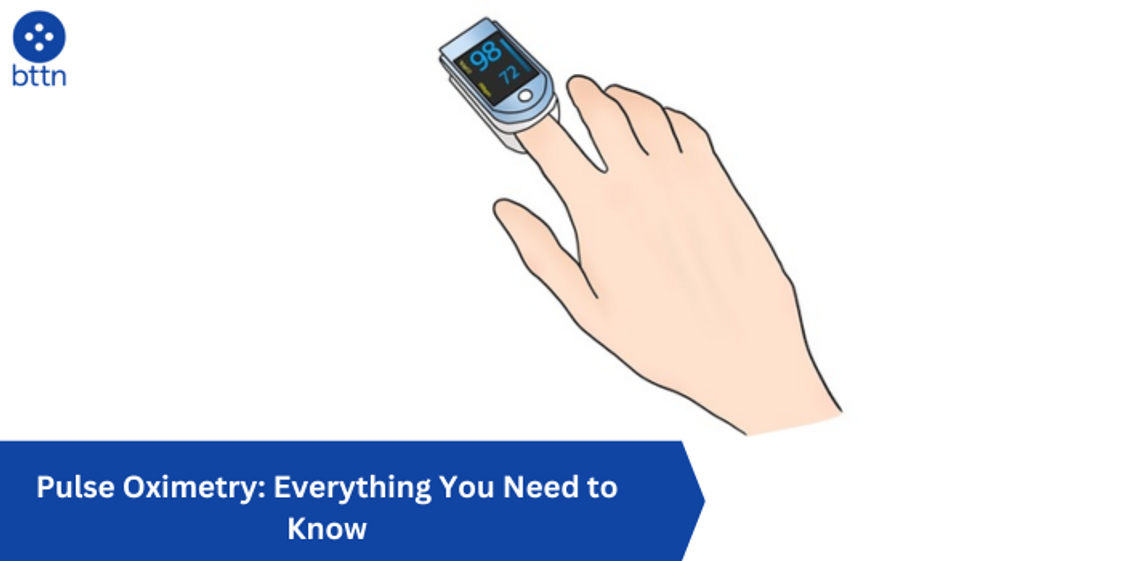
Pulse Oximetry: Everything You Need to Know
Posted by Pankaj Dhiman on May 6th 2024
Pulse Oximetry: Uses, Readings, How It Works, Procedure, Risks, and Results
In today's health-conscious world, monitoring our vital signs has become increasingly important. One tool that has gained widespread use and popularity is the pulse oximeter. But what exactly is pulse oximetry, how does it work, and why is it important? In this comprehensive guide, we'll delve into the uses, readings, procedure, risks, and results associated with pulse oximetry.
What is Pulse Oximetry?
Pulse oximetry is a non-invasive method used to measure the oxygen saturation level in your blood, as well as your heart rate. It's a valuable tool for assessing how well your heart and lungs are functioning. Oxygen saturation (often referred to as "sats") indicates the percentage of hemoglobin molecules in your blood that are carrying oxygen.
Shop Now: BCI Pulse Oximeter Accessories
How Does Pulse Oximetry Work?
The device used in pulse oximetry is called a pulse oximeter. This small electronic device clips onto a thin part of your body, usually a finger, toe, or earlobe. It emits light wavelengths that pass through your skin and detect the amount of oxygenated versus deoxygenated hemoglobin in your blood. The oximeter then calculates your oxygen saturation level based on the ratio of these two types of hemoglobin.
Shop Now: ADC Adimal Pulse Oximeter
Uses of Pulse Oximetry
- Monitoring Respiratory Conditions: Pulse oximetry is commonly used to monitor individuals with respiratory conditions such as asthma, chronic obstructive pulmonary disease (COPD), and pneumonia. It helps healthcare providers assess the severity of these conditions and determine appropriate treatment.
- Screening for Sleep Apnea: Sleep apnea is a sleep disorder characterized by pauses in breathing during sleep. Overnight pulse oximetry can help diagnose sleep apnea by detecting drops in oxygen levels during sleep.
- Assessing Physical Fitness: Pulse oximeters are used by athletes and fitness enthusiasts to monitor their oxygen saturation levels during workouts. This can help optimize training and prevent overexertion.
- Monitoring COVID-19 Patients: During the COVID-19 pandemic, pulse oximetry gained prominence as a tool for monitoring patients with respiratory symptoms. It helped identify individuals who might require medical attention due to low oxygen levels, a common complication of severe COVID-19.
Order Now: ADC Advantage 2200 Digital Fingertip Pulse Oximeter
Understanding Oximeter Readings
When using a pulse oximeter, the reading you receive is typically displayed as a percentage. A normal oxygen saturation level for a healthy individual is usually between 95% and 100%. Levels below 90% may indicate hypoxemia (low blood oxygen) and require medical attention.
Procedure for Using a Pulse Oximeter
Using a pulse oximeter is simple and painless:
- Prepare the Device: Insert batteries if required and power on the oximeter.
- Place the Sensor: Clip the sensor onto your finger, toe, or earlobe.
- Wait for Reading: Within seconds, the oximeter displays your oxygen saturation level and heart rate.
Shop Now: ADC Diagnostix 2100 Digital Fingertip Pulse Oximeter
Risks and Considerations
While pulse oximetry is generally safe and non-invasive, there are a few factors to consider:
- Accuracy: Factors like poor circulation, nail polish, or dark skin pigmentation can affect the accuracy of readings.
- False Readings: Motion artifacts or excessive movement during measurement can lead to inaccurate readings.
- Medical Guidance: Always interpret oximeter readings in consultation with a healthcare professional.
Results and Interpretation
Interpreting pulse oximeter results should be done in context with other symptoms and medical history. Your healthcare provider can determine if your oxygen saturation level is within a healthy range or if further investigation is necessary.
The Bottom Line
Pulse oximetry is a valuable tool for assessing oxygen saturation levels and heart rate in various clinical and non-clinical settings. Whether you're managing a respiratory condition, monitoring fitness levels, or simply curious about your body's performance, a pulse oximeter can provide essential insights into your health.
FAQs
1. Can I use a pulse oximeter at home?
A. Yes, many pulse oximeters are designed for home use and can be purchased over the counter.
2. Are there different types of pulse oximeters?
A. There are fingertip, handheld, and wrist-worn pulse oximeters available, each with its own advantages.
3. How often should I use a pulse oximeter?
A. The frequency of use depends on your specific health needs and should be discussed with your healthcare provider.
4. Is pulse oximetry painful?
A. No, pulse oximetry is painless and non-invasive.
Where to Buy Pulse Oximetry
If you're considering purchasing a pulse oximeter, look no further than bttn. They offer a range of reliable pulse oximeters suitable for home use, backed by excellent customer service and support.
In conclusion, pulse oximetry is a valuable tool that provides crucial insights into your body's oxygenation status and heart rate. Whether you're managing a chronic condition, tracking fitness goals, or safeguarding against respiratory illnesses, a pulse oximeter can be a beneficial addition to your healthcare toolkit. Remember, always consult with your healthcare provider for proper interpretation and guidance based on your individual health needs.





























































